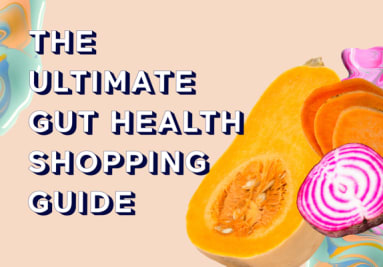“It’s important to know there are pickles and then there are pickles!” says nutrition consultant and natural chef Karyn Forsyth Duggan, M.S., BBS. “The classic store-bought pickled vegetables are simply pickled in vinegar and then canned/jarred so they’re shelf-stable. There’s really no comparison between these pickled foods and foods that have actually been fermented.” “Pickled foods can be made via fermentation,” says Megan Meyer, Ph.D., director of science communications at the International Food Information Council. “Fermentation is a process where bacteria or yeast convert sugars found in foods into lactic acid or alcohol. Foods that are fermented via lactic acid fermentation impart the tangy flavor associated with foods like yogurt, kimchi, sauerkraut, and pickles.” But when it comes to the store-bought variety, Silberman says, buyer beware. “They’re typically high in sodium, so watch for that. Also, I recently noticed a particular brand used artificial colors in their pickles to provide a more vibrant yellow/greenish hue. Yellow 5 is not a food! Be sure to stay away from those artificial additives.” “When buying pickled foods that are pickled with a slow fermentation, you’ll benefit from natural probiotics that support the microbiome,” says sports dietitian Kelly Jones, M.S., R.D., CSSD. “The microbiome, or all the bacteria and microbes living in and on the body, is linked to immunity, mental health, metabolism, and more1. Because fermented foods are made with the help of microorganisms, they’re often classified as “probiotics,” but Meyer says it’s important to be cautious with that categorization, particularly when purchasing pickles from the store. “To be considered a probiotic, the microorganisms found in the food have to have known health benefits,” she says. “Bottom line: if you are buying pickles from a can at a grocery store, there’s very little chance there’s any probiotics in them. If you are buying them at a farmers market or making them yourself, there will most likely be microorganisms in the pickles but it’s often not clear the type, diversity, and amount of the microorganisms.” “Store-bought pickles are often heat-treated to make them shelf-stable, which kills off the beneficial bacteria,” Albina says. “Many often have added preservatives and stabilizers, and sadly several store brands have food dye in them, all of which I try to avoid whenever I can. Luckily, homemade fermented and pickled foods are so quick and easy to make at home, avoiding those chemicals.” “You can make a quick pickle by adding thinly sliced or julienned veggies such as onions, cabbage, or carrots to a small saucepan and heating them with red wine or apple cider vinegar as well as a touch of raw honey and salt,” Jones says. “While this would not offer probiotics, the acid from the vinegar may have a positive benefit on digestion.” “I love to do a quick pickle with vegetables like cucumbers, radishes, carrot sticks using equal parts water and vinegar (white vinegar, apple cider, white wine, and rice vinegar all work well),” Albina says. “I add lots of yummy herbs and spices and let the pickles sit for just a day or two before they’re delightfully yummy to eat. I keep a quick pickle in the fridge.” “Dill is my favorite herb to use for pickling,” says holistic nutritionist Mandy King, CNP, NNCP, BCom. “You’d be surprised how many other pickled veggies taste great with dill. Pickled carrots and green beans with dill are fantastic!” She’s also a contributing editor at California Home Design.



